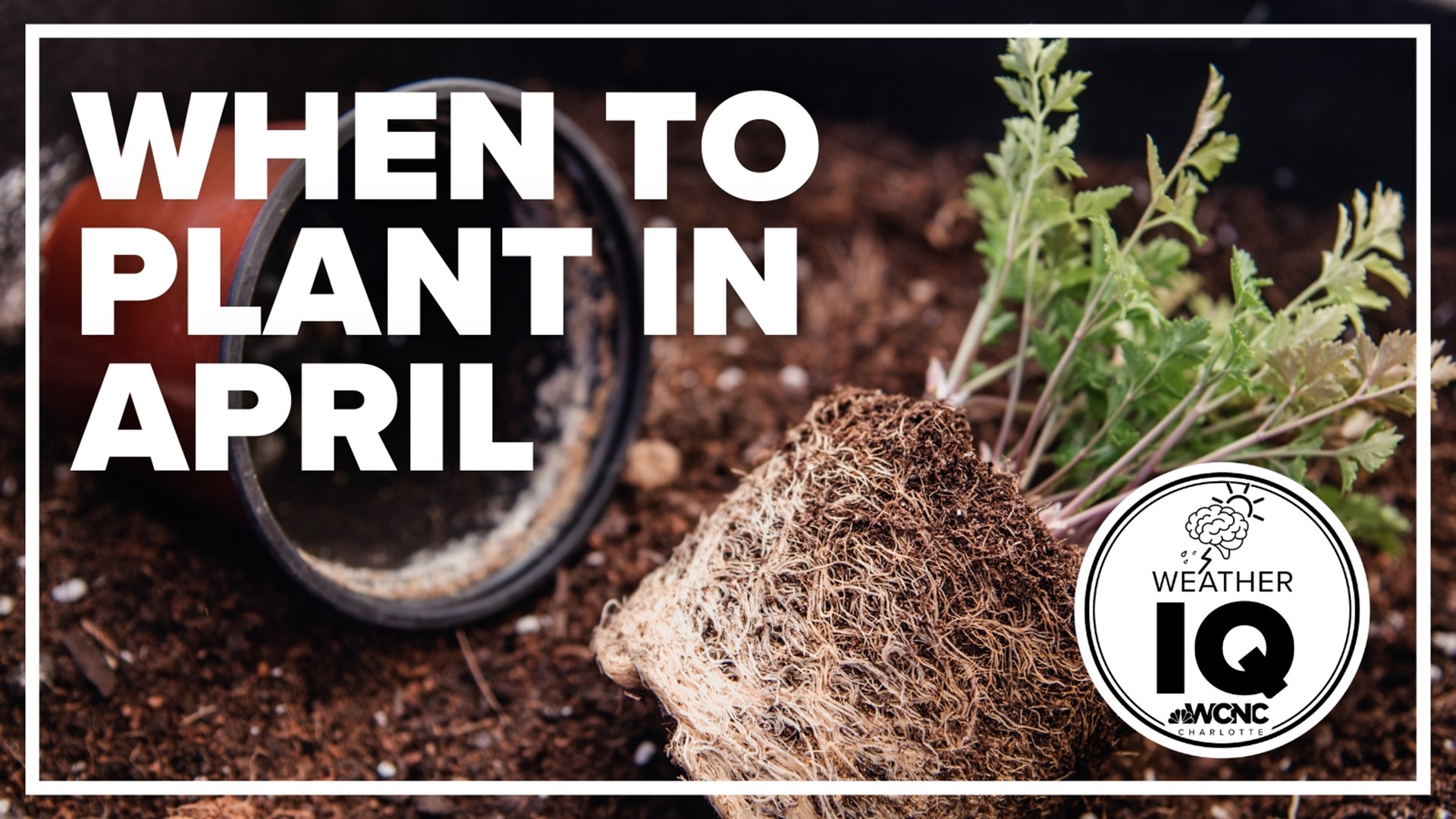CHARLOTTE, N.C. — April is when plant growth really starts to take off. Here is what you need to know about April Weather and planting.
NOTE: For this Weather IQ, we consulted Stacy Hodes, one of the Master Gardeners of the Mecklenburg County Extension under the guidance of North Carolina State University. To find out what to plant and when to plant during the month of April.
When it is "safe" to plant
Rule No. 1. It is best to wait until April 15.
This is a typical date when it is safe to plant based on data from the National Weather Service.
Over the past 145 years in Charlotte, It has only dropped to freezing or below 21 times after April 15.
So after this date, the tomatoes, cucumbers, corn, etc. are ready to be planted.
“It’s still a good idea to keep an eye on the weather and even keep things in pots temporarily."
But some vegetables are good to plant before mid-April. Carrots, radishes, turnips, lettuce, collard greens and parsley are cold hearty vegetables that can withstand a sudden late freeze.
Impulse buying plant warning
It’s this time of year you are going to be tempted at those big box stores.
“It’s like eye candy to buy those plants,” master gardener Stacy Hodes said.
“Everything comes in early, and you want to put it in your yard right away; that’s where you need to be careful,” Hodes said.
She suggests if you have to have that plant now, just be mindful of the weather and potential late freezes.
TIP: When buying plants this spring read the labels carefully and pick plants that meet the light and space requirements for your garden. Note how tall it will get and exactly how much sun it needs.
Things to do in the yard in April
Prune early flowering trees and shrubs as soon as the blooms have faded
Clean up any leftover winter mess
Take ornamental grasses down to the ground
Grass: If you have a cool season lawn like Tall Fescue, it is time to start mowing at least once a week. The best method for mowing is to cut the grass to 3-4 inches. Keeping it on the high side should reduce the number of weeds and hold more moisture, resulting in a thicker, healthier lawn.
Keep bushes, beds and trees well mulched. But when mulching, keep the mulch away from the lower stems and base of bushes and trees. No mulch volcanoes where the mulch is piled up around the base of plants. They need to breathe.
Fertilize fruit trees, spring flowering shrubs and vines after they bloom.
If you have an established bed with mature bushes and trees and you keep it mulched, you may not need to add fertilizer.
TIP: Get a soil test
Before you put down fertilizer on your grass or beds. Get a soil test; they only cost the price of postage between April and November. Hodes said it is important to know the soil's pH
“A plant cannot take up fertilizer unless its pH is in the right zone,” Hodes explained.
This is an easy thing that should be done if you are serious about maximizing the growth of your flowers, plants and vegetables.
Contact Chris Mulcahy at cmulcahy@wcnc.com and follow him on Facebook, Twitter, Instagram and TikTok.

